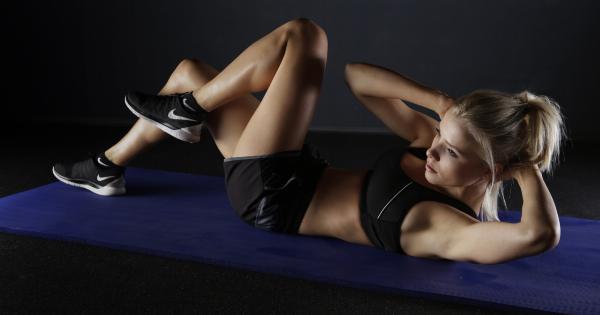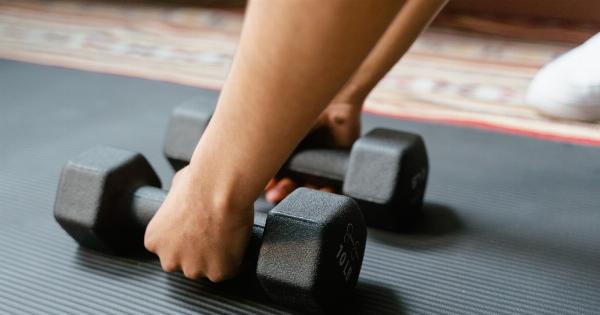In today’s fast-paced and sedentary lifestyle, maintaining a healthy heart is more important than ever. One of the key factors in maintaining cardiovascular health is keeping your cholesterol levels in check.
High levels of cholesterol have been linked to an increased risk of heart disease, stroke, and other serious health conditions. Fortunately, with regular exercise and a healthy diet, you can lower your cholesterol and strengthen your heart. In this article, we will explore seven movements that can help you achieve these goals.
Movement 1: Walking
Walking is one of the easiest and most accessible forms of exercise. It requires no special equipment and can be done anytime, anywhere.
Regular walking can help raise your levels of high-density lipoprotein (HDL) cholesterol, which is known as “good” cholesterol. HDL cholesterol helps transport low-density lipoprotein (LDL) cholesterol, also known as “bad” cholesterol, out of your bloodstream, preventing plaque buildup in your arteries.
To get the most benefits, aim for at least 30 minutes of brisk walking a day. If you are new to walking, start with shorter durations and gradually increase your pace and distance.
You can also try incorporating interval training into your walks by alternating between a brisk pace and a slower recovery pace.
Movement 2: Cycling
Cycling is a low-impact exercise that can be enjoyed by people of all ages and fitness levels. It is a great way to get your heart pumping without putting too much stress on your joints.
Cycling regularly can help reduce LDL cholesterol levels and increase HDL cholesterol levels.
Whether you choose to cycle outdoors or use a stationary bike, aim for at least 150 minutes of moderate intensity cycling per week. You can break this up into shorter sessions if needed.
Remember to adjust the resistance or incline to challenge yourself and vary the intensity of your workouts.
Movement 3: Swimming
Swimming is a fantastic full-body workout that is gentle on the joints. It helps improve cardiovascular fitness and can lower your risk of heart disease.
Swimming regularly has been shown to increase HDL cholesterol levels while reducing LDL cholesterol levels.
Try to swim for at least 30 minutes to an hour, three to four times a week. You can mix up your swim routine by including different strokes, such as freestyle, breaststroke, and backstroke.
If you are new to swimming, consider taking lessons to improve your technique and increase your confidence in the water.
Movement 4: High-Intensity Interval Training
High-intensity interval training (HIIT) involves short bursts of intense exercise followed by periods of rest or lower intensity activity. This type of exercise has been shown to effectively improve cardiovascular fitness and lower cholesterol levels.
You can incorporate HIIT into various forms of exercise, such as running, cycling, or bodyweight exercises.
For example, start with a warm-up, then perform 30 seconds of all-out effort (e.g., sprinting or cycling at maximum speed), followed by 60 seconds of active recovery (e.g., walking or cycling at a slow pace). Repeat this cycle for 15-20 minutes, gradually increasing the duration and intensity as your fitness improves.
Movement 5: Strength Training
Strength training is not just for building muscle and improving bone health; it also offers significant benefits for your heart.
Regular strength training can increase HDL cholesterol levels and improve insulin sensitivity, both of which are crucial for maintaining a healthy heart.
Include compound exercises that target multiple muscle groups, such as squats, deadlifts, lunges, and push-ups, in your strength training routine.
Aim for at least two days a week of full-body strength training or focus on specific muscle groups on alternate days.
Movement 6: Yoga
Yoga is a holistic practice that combines physical movements, breath control, and meditation. It can help reduce stress, improve flexibility, and enhance cardiovascular health.
Certain yoga poses, such as forward bends, twists, and inversions, can stimulate blood circulation, lower blood pressure, and support a healthy cardiovascular system.
Practice yoga for at least 30 minutes a day, three to five times a week. Attend classes or follow online tutorials to learn proper alignment and different yoga sequences. Remember to listen to your body and modify poses as needed.
Movement 7: Jumping Rope
Jumping rope is an excellent cardiovascular exercise that strengthens your heart and lungs while improving coordination and stamina.
It can burn a significant number of calories in a short period, making it an efficient way to lower cholesterol and maintain a healthy weight.
Start with shorter sessions, gradually building up to 10-20 minutes of continuous jumping. Alternate between different footwork patterns, such as single leg hops, double unders, or side swings, to keep your workouts fun and challenging.
Conclusion
Lowering your cholesterol and building a strong heart can significantly improve your overall health and reduce the risk of cardiovascular diseases. Incorporating these seven movements into your regular exercise routine can help you achieve these goals.
Remember to consult with your healthcare provider before starting any new exercise program, especially if you have any existing health conditions or concerns.

























